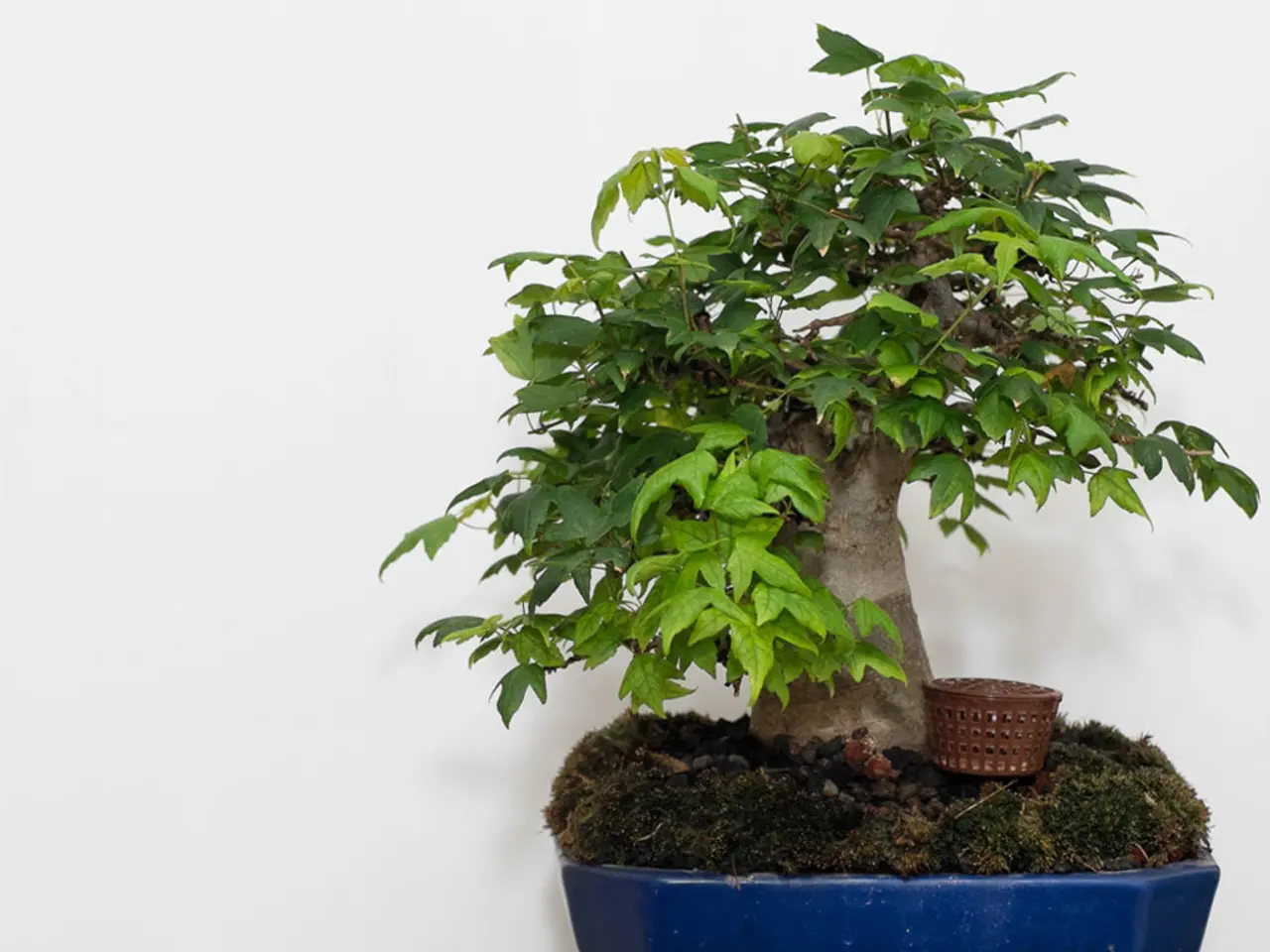Bonsai Sculpting Sessions: Methods and Creative Perspectives
In the enchanting world of bonsai, artists embark on a captivating journey to define their unique artistic voice. This process begins with the critical step of defining one's artistic identity, a key aspect that sets each bonsai stylist apart.
Bonsai stylists delve into the intriguing relationship between form and foliage, balancing aesthetics with the natural tendencies of the tree. This shift in perspective inspires a sense of reverence and awe, encouraging enthusiasts to approach their craft with a sense of mindfulness and gratitude.
The slow and deliberate process of bonsai growth reveals the intricate dance between nature and nurture, as enthusiasts embrace each step. Through this profound connection, bonsai enthusiasts come to realize that the true art of bonsai lies not in the manipulation of form, but in the gentle coaxing of the tree's inherent beauty, allowing it to unfold like a delicate flower.
Key techniques in bonsai styling, such as pruning, wiring, selective branch bending, root trimming, and pot selection, are practical and artistic tools that allow expression through living form. These techniques enable the artist to create classic bonsai styles, like the formal upright (Chokkan), characterized by a straight trunk with natural taper and symmetrically spaced branches forming a balanced tapered shape.
Pruning involves trimming branches and foliage regularly to shape the tree and maintain its miniature size. Wiring uses flexible wire applied to branches and sometimes the trunk to guide their growth direction and create the desired angles and curves over time. Root pruning and reducing container size control the tree's growth and maintain its miniature scale.
These principles contribute deeply to artistic expression by enabling the bonsai artist to create a tree that appears natural, mature, and harmonious from every angle, often following elegant geometric patterns. The artistic process emphasizes balance, proportion, and natural aesthetics that evoke a sense of age, serenity, and beauty.
Moreover, bonsai cultivation fosters a deeper connection with nature through mindfulness and attentive care. This intimate relationship with the tree encourages patience, discipline, and an appreciation for natural cycles and subtle growth changes. The careful selection of pots and placement further integrates the bonsai as a living sculpture that harmonizes with its environment, echoing Japanese aesthetics of simplicity and connection to the natural world.
As participants engage with various techniques and principles, they begin to refine their creative expression, allowing their personal artistic voice to shine through. By exploring and refining their artistic identity, bonsai stylists can craft unique expressions that reflect their individuality, transcending mere technical skill to evoke emotional resonance.
As they work in harmony with the natural world, enthusiasts begin to see the trees not just as objects to be shaped, but as living, breathing entities with their own stories to tell. By mastering the art of bonsai styling, enthusiasts can breathe life into ordinary trees, coaxing them into extraordinary, living works of art that evoke emotions, spark imagination, and connect us with the natural world.
Frequently, the cultivation of a creative voice in bonsai styling begins with an introspective exploration of personal inspirations. Identifying personal inspirations and themes that resonate with their artistic vision is essential in shaping a unique voice that sets their work apart. By distilling their unique perspective and aesthetic sensibilities, practitioners cultivate a distinctive artistic voice through bonsai styling workshops.
Embracing the imperfections and nuances that make each bonsai unique, enthusiasts can expect to develop a deeper understanding of their artistic vision, allowing them to craft miniature trees that reflect their unique perspective. As they refine techniques and understand the subtleties of bonsai development, practitioners cultivate a sense of empathy with the trees, recognizing their own imperfections and limitations.
In the end, by mastering the art of bonsai styling, enthusiasts can breathe life into ordinary trees, coaxing them into extraordinary, living works of art that evoke emotions, spark imagination, and connect us with the natural world.
Read also:
- Car owner sells Lamborghini Huracán Performante, purchased for $281K, to WeBuyAnyCar three days after acquisition to assess trade-in value
- Mornings have become invigorating with the substitution of my traditional alarm clock for a Philips Hue light.
- Unmissable Father's Day Presents Likely to Captivate You as Well
- Sustainable cosmetics: Pursuing a greener and environmentally friendly beauty sector




